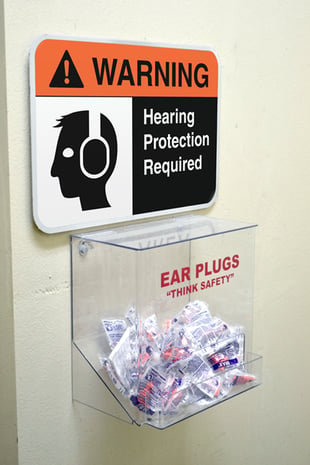Hearing Loss Now Afflicts 40 Million Americans, Says the CDC
03
February,
2023
2 MINUTE READ

One in four adults aged 20 to 69 experiences hearing deficits, according to a hearing study conducted by the Centers for Disease Control and Prevention (CDC). Hearing loss, which worsens with age, is the third most common chronic physical condition in the U.S., and is twice as common as diabetes or cancer in adults, according to the CDC.
The National Institute for Occupational Safety and Health (NIOSH) has regulations governing hearing and hearing loss in adults, recognizing that 22 million workers are exposed to potentially damaging noise each year. OSHA estimates that $242 million is spent annually on workers' compensation for hearing loss, and requires employers to take steps to protect employee health when noise exposure levels reach a time-weighted average sound level of 85 decibels for eight hours or longer (or 90 decibels in the construction industry).
Although you would have been hard-pressed to find earplugs in use at Woodstock in 1969, one of the most famous rock festivals of all time, increasing amounts of ear protection are showing up in daily life. With traffic, sirens, live sporting events, and music assaulting our auditory processing, a new reality is exposed; for our ears, the times they are a-changing.
Where Americans Experience Hearing Loss
Brief exposure to high sound levels can cause permanent damage, and longer exposures at lower sound levels can be damaging. According to the CDC, with results published in the Washington Post in February 2017, one minute of hearing a 120-decibel siren can damage hearing, as can:
- Two hours of exposure to a 90-decibel leaf blower
- Attending a 100-decibel sporting event for 14 minutes
- Two minutes at a 110-decibel rock concert
The Post reports, "The federal government has no regulation governing exposure to noise outside the workplace, but the Environmental Protection Agency recommends hearing no more than eight hours of an intermittent noise of 75 decibels or more. That is somewhere between the sound of a working washing machine and the traffic noise inside a car."
Although OSHA and NIOSH have done good work in letting workers know they need protection against loud machinery, 53 percent of those studied by the CDC who had experienced hearing loss "said they had no regular exposure to loud noise at work. That means the hearing loss was caused by other environmental factors, including listening to music through headphones with the volume turned up too high."
How Visual Communication Can Help Combat Hearing Loss
Employers that are conscious of hearing loss provide a means to protect workers' ears in the form of PPE. However, that's only half the job if the PPE is hidden in a desk drawer, or if visitors don't know where the PPE is located. Duralabel offers dozens of premade signs alerting people of noise danger, protection whereabouts, and whether PPE is required.
Envision visiting a manufacturing facility or your favorite brewery and seeing ear PPE provided, accompanied by signage reminding that your hearing is precious and to protect it. With DuraLabel printers and supplies, users can customize their own labels announcing hearing hazards, while at the same time ensuring signs and labels can help employers comply with OSHA's requirements.
With 40 million 20-to-69-year-olds afflicted with hearing loss, companies and event producers who take hearing loss into their own hands, assisted by visual communication reminders, will be the leading edge of protecting hearing for the next generation.
RELATED RESOURCES

ASSE to Become American Society of Safety Professionals
Group says the updated brand shows a clearer vision that will better reflect the organization's current ...
Read
3 Takeaways from Gastech 2019
Gastech is a large show with great opportunities to look at what the next generation of the gas technology ...
Read
Books That Shaped Work in America
Books reflect the life and times of people. Narrowing the lenses on people at work provides an intriguing ...
Read.png)


